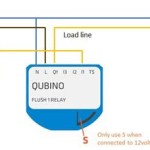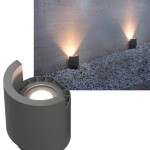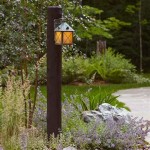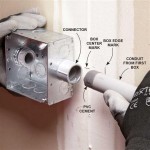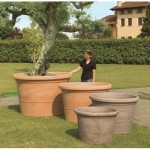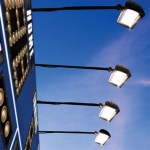Outdoor Patio Fire Pit Ideas for Enhanced Ambiance and Functionality
Outdoor living spaces have become increasingly valued as extensions of the home, providing areas for relaxation, entertainment, and connection with nature. A central element in many of these spaces is the fire pit, offering warmth, light, and a focal point for gatherings. Selecting the right fire pit and integrating it effectively into the patio design requires careful consideration of various factors, including style, fuel type, safety, and surrounding landscape. This article will explore a range of outdoor patio fire pit ideas, providing insights into maximizing both aesthetic appeal and practical functionality.
The appeal of a fire pit extends beyond its functional purpose. It creates an inviting atmosphere, encouraging social interaction and providing a natural gathering spot. The dancing flames offer a calming effect, promoting relaxation and reducing stress. Furthermore, fire pits can extend the usability of the patio well into the cooler months, allowing for year-round enjoyment of the outdoor space. The options available are diverse, ranging from simple, portable designs to elaborate, custom-built structures, allowing homeowners to tailor their choice to suit their individual needs and preferences.
Choosing the Right Fire Pit Style
The style of the fire pit should complement the existing aesthetic of the patio and the overall design of the home. Consider the architectural style of the house, the materials used in the patio construction, and the desired atmosphere of the outdoor space. A contemporary home might benefit from a sleek, minimalist fire pit with clean lines and geometric shapes, while a more traditional home could be enhanced by a rustic, stone-clad fire pit. Several popular style categories warrant consideration.
Built-in Fire Pits:
These are permanent structures, typically constructed from materials such as stone, brick, or concrete. Built-in fire pits offer a sense of permanence and can be seamlessly integrated into the patio design. They often incorporate seating areas and surrounding landscaping, creating a cohesive and visually appealing outdoor living space. The design flexibility of built-in fire pits allows for customization to match specific design requirements, including shape, size, and material selection. The primary drawback is the permanence of the structure, limiting the ability to relocate it.Portable Fire Pits:
These are self-contained units that can be easily moved around the patio or transported to different locations. Portable fire pits are available in a variety of styles, including metal bowls, chimineas, and propane-fueled units. Their portability makes them a versatile option for homeowners who want the flexibility to adjust their outdoor space layout. Portable fire pits are generally less expensive than built-in models, offering an accessible entry point for enjoying the ambiance of a fire. However, they may not provide the same level of aesthetic integration as built-in options.Tabletop Fire Pits:
These smaller units are designed to sit on a table, providing a focal point for outdoor dining or relaxation. Tabletop fire pits are often powered by propane or gel fuel and offer a convenient and safe way to enjoy the ambiance of a fire without the need for a large, dedicated space. They are particularly well-suited for smaller patios or balconies where space is limited. While they offer a visually appealing accent, they generally provide less heat output than larger fire pit options.Fire Bowls:
Fire bowls are typically round or oval-shaped vessels made from materials such as copper, steel, or concrete. They offer a modern and sophisticated aesthetic and can be used as standalone features or integrated into a larger patio design. Fire bowls often incorporate decorative elements, such as lava rocks or fire glass, to enhance their visual appeal. Their rounded shape offers a softer, more organic feel compared to the sharp angles of some other fire pit styles.The choice of style will ultimately depend on the homeowner's personal preferences, the existing design of the outdoor space, and the desired level of functionality. Careful consideration of these factors will ensure that the fire pit complements the patio and enhances the overall outdoor living experience.
Selecting the Appropriate Fuel Type
The choice of fuel type significantly impacts the fire pit's performance, cost, and environmental impact. The most common fuel types for outdoor fire pits are wood, propane, and natural gas. Each fuel type has its own advantages and disadvantages, influencing the selection process.
Wood-Burning Fire Pits:
Wood-burning fire pits offer the classic appeal of a traditional campfire, providing a natural aroma and crackling sound. They are relatively inexpensive to operate, as wood is readily available in many areas. However, wood-burning fire pits produce smoke and embers, requiring careful consideration of safety regulations and local ordinances. They also require regular maintenance to remove ashes and debris. The open flame necessitates close supervision and adherence to safety precautions to prevent accidental fires. Furthermore, some jurisdictions may restrict or prohibit wood-burning fire pits due to air quality concerns.Propane Fire Pits:
Propane fire pits offer a clean-burning and convenient alternative to wood. They produce minimal smoke and embers, making them a more environmentally friendly option. Propane fire pits are easy to operate, with adjustable flame heights and push-button ignition. They can be connected to a portable propane tank or a larger, permanent tank for extended use. The heat output of propane fire pits is generally consistent and reliable. However, propane tanks require regular refills, and the cost of propane can fluctuate depending on market conditions. Furthermore, propane tanks must be stored safely to prevent leaks or explosions. The aesthetic of a propane fire pit can be enhanced with decorative elements such as fire glass or ceramic logs.Natural Gas Fire Pits:
Natural gas fire pits offer a convenient and reliable fuel source, as they are connected to a permanent gas line. They produce minimal smoke and embers and are easy to operate, with adjustable flame heights and remote control options. Natural gas fire pits are generally more expensive to install than propane or wood-burning models, as they require professional installation of a gas line. However, they offer a long-term cost-effective solution, as natural gas is typically less expensive than propane. Natural gas fire pits provide a consistent heat output and require minimal maintenance. However, they are not portable and must be installed in a fixed location. The installation process requires careful planning and adherence to local building codes.The selection of fuel type should be based on factors such as cost, convenience, environmental impact, and personal preferences. Careful consideration of these factors will ensure that the fire pit meets the homeowner's specific needs and requirements. Local regulations regarding fire pit usage should also be taken into account.
Incorporating Safety and Functionality
Safety should be the paramount consideration when designing an outdoor patio with a fire pit. Proper planning and adherence to safety guidelines are essential to prevent accidents and ensure a safe and enjoyable outdoor experience. The location of the fire pit, the surrounding materials, and the presence of children or pets all contribute to the overall safety of the area.
Clearance and Spacing:
Maintain a safe distance between the fire pit and any flammable materials, such as trees, shrubs, fences, or overhanging structures. A minimum clearance of 10 feet is generally recommended. Ensure adequate spacing around the fire pit to allow for comfortable seating and movement. Avoid placing the fire pit on a wooden deck or near dry vegetation. Consider using a non-combustible base material, such as gravel or concrete, to create a safety perimeter around the fire pit. The proximity of the fire pit to the house should also be considered, minimizing the risk of embers reaching the building.Protective Barriers:
Consider installing a protective screen or spark arrestor to contain embers and prevent them from escaping the fire pit. This is particularly important for wood-burning fire pits. A fire pit cover can be used to protect the fire pit from the elements and prevent unauthorized access. A fence or other barrier can be used to restrict access to the fire pit, especially for young children and pets. The height of the barrier should be sufficient to prevent accidental falls into the fire pit.Fire Safety Equipment:
Keep a fire extinguisher, a bucket of water, or a garden hose readily available near the fire pit in case of emergencies. Know how to use the fire extinguisher and be prepared to extinguish any accidental fires. Educate all family members and guests on fire safety procedures. Regularly inspect the fire pit and surrounding area for potential hazards. Ensure that all gas lines are properly connected and that there are no leaks. The use of a carbon monoxide detector is recommended, especially for enclosed patios or porches.Seating and Comfort:
Arrange seating around the fire pit to create a comfortable and inviting gathering space. Use fire-resistant materials for seating, such as metal, stone, or concrete. Consider the height and angle of the seating to optimize views of the fire. Provide adequate lighting around the fire pit to ensure safe visibility. Consider adding blankets or throws for added warmth and comfort during cooler evenings. The layout of the seating area should facilitate conversation and interaction among guests. The placement of the seating should also take into account the prevailing wind direction to minimize exposure to smoke.By prioritizing safety and functionality, homeowners can create an outdoor patio with a fire pit that provides years of enjoyment and enhances the overall outdoor living experience. Regular maintenance and adherence to safety guidelines are essential to ensure the continued safe operation of the fire pit. The integration of appropriate safety features will contribute to a relaxed and worry-free environment for enjoying the ambiance of a fire.

12 Best Outdoor Fire Pit Ideas Diy Backyard

12 Best Outdoor Fire Pit Ideas Diy Backyard

14 Outdoor Fire Pit Ideas To Upgrade Your Backyard

30 Fire Pit Ideas That Are Under The Budget Backyard Patio

60 Fire Pit Ideas And Diys
:max_bytes(150000):strip_icc()/PhotoandDesignbyYardzen-03d8fd1882c64534869ece57801f4877.jpg?strip=all)
14 Outdoor Fire Pit Ideas To Upgrade Your Backyard

Fire Pit Ideas And Outdoor Fireplaces

60 Backyard And Patio Fire Pit Ideas Diffe Types With Photo Examples Landscaping Outdoor Designs

Best Fire Pit Ideas Heated Backyard Retreat Designs Natural Brick Stone Depot

Fire Pit Ideas And Inspiration Forbes Home
